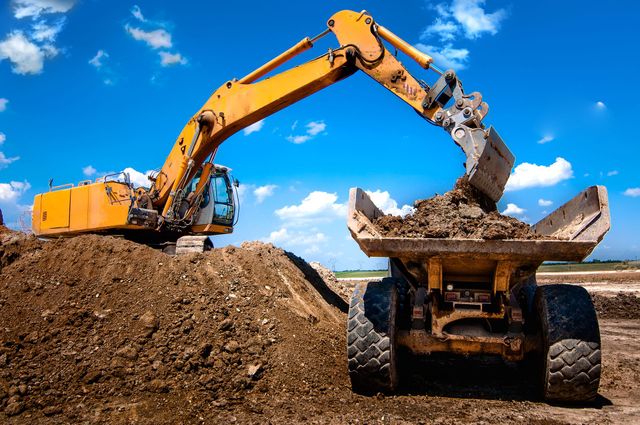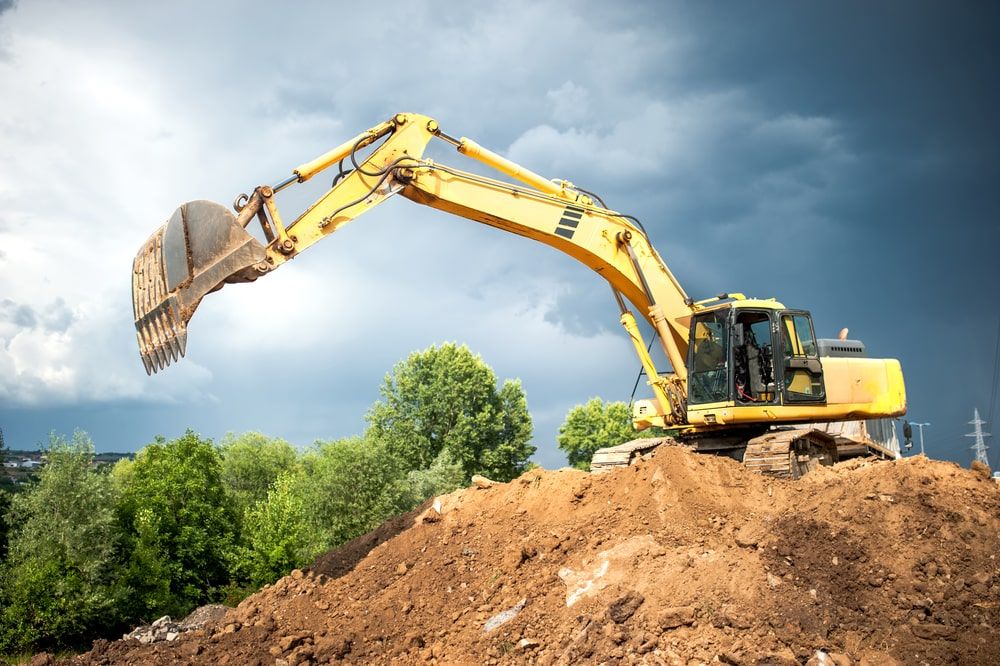Expert Septic Ohio - Trusted Septic System Experts in Ohio
Expert Septic Ohio - Trusted Septic System Experts in Ohio
Blog Article
Comprehensive Expedition: The Science Behind Superior Excavation Practices
From ancient hand devices to modern hydraulic excavators, the advancement of excavation methods has actually been a testimony to human ingenuity and technical developments. What absolutely sets superior excavation techniques apart is a deep understanding of geological principles, paired with the usage of sophisticated tools and methods.
Evolution of Excavation Methods
Throughout history, the development of excavation strategies has played a crucial function ahead of time building techniques and archaeological explorations. From the primary tools utilized by our forefathers to the advanced equipment employed in modern-day times, the development of excavation methods has substantially changed how we come close to numerous projects.
In old times, manual labor with fundamental devices such as shovels, pickaxes, and wheelbarrows was the main approach of excavation. This labor-intensive procedure limited the depth and scope of excavations, typically causing slow-moving progress and restricted accessibility to specific websites. However, as worlds progressed, so did the tools and techniques utilized for excavation.
The Industrial Revolution noted a transforming factor in excavation methods with the introduction of steam-powered machinery. In contemporary times, innovation plays an essential role in excavation, with developments like GPS systems, drones, and 3D scanning boosting accuracy and performance in the field.
Duty of Modern Technology in Excavation

The combination of cutting-edge technology has actually basically revolutionized the field of excavation, boosting accuracy and effectiveness to extraordinary levels - septic ohio. One of the essential technological innovations that has substantially influenced excavation practices is the use of General practitioner systems.
Furthermore, the introduction of 3D modeling and simulation software program has structured the planning process for excavation jobs. Designers and drivers can currently imagine the entire excavation process before breaking ground, enhancing and recognizing possible obstacles workflow. Together with this, the application of drones in excavation tasks has actually promoted aerial surveys, volumetric measurements, and site assessments with unequaled rate and precision.
Geological Concepts in Excavation
An understanding of geological concepts is essential for guaranteeing the structural stability and stability of excavation sites. Geological elements play a vital function in figuring out the usefulness and safety and security of excavation tasks (lancaster excavation). One essential geological principle to consider is the sort of dirt or rock present at the site. Different soil kinds, such as crushed rock, clay, or sand, have varying degrees of security and need various excavation techniques. For example, cohesive soils like clay may need extra assistance to protect against collapses, while sandy soils may be vulnerable to disintegration during excavation.
By conducting extensive geological studies and evaluation, engineers and excavators can establish strategies to reduce dangers and ensure the successful conclusion of excavation jobs. Ultimately, incorporating geological concepts into excavation techniques is vital for attaining safe, effective, and sustainable results.

Most Recent Tools for Excavation
In the realm of excavation methods, modern innovations in devices have reinvented the performance and accuracy of excavation procedures. Among the newest tools making waves in the market is using drones equipped with sophisticated imaging technology. These drones can provide detailed airborne studies of excavation websites, using real-time information on topography and potential hazards. This details aids in better preparation and decision-making during the excavation process.
One more cutting-edge tool gaining popularity is the execution of 3D printing technology for creating custom excavation equipment. This permits the manufacturing of specialized devices that are tailored to the particular requirements of a task, raising performance and lowering downtime.
In addition, improvements in materials Resources science have actually caused the advancement of stronger and extra resilient excavation tools. lancaster trenching. Tungsten carbide-tipped excavator attachments, for instance, deal exceptional efficiency in challenging ground conditions, enhancing efficiency on-site
Science's Impact on Excavation Practices

Additionally, innovations in products science have resulted in the production of more powerful, extra durable excavation tools and devices. The usage of composite Full Article materials in miners and shovels has boosted their performance and longevity, inevitably enhancing performance on excavation sites. In addition, scientific research on dirt auto mechanics and geotechnical design has offered important understandings into dirt behavior, permitting excavation professionals to make enlightened decisions pertaining to excavation techniques and dirt stabilization methods. On the whole, science remains to drive technology and improvement in excavation techniques, making excavation projects extra efficient, cost-efficient, and sustainable.

Final Thought
Finally, the advancement of excavation techniques has been significantly affected by improvements in modern technology and a much deeper understanding of geological concepts. The most recent devices and tools made use of in excavation have actually boosted effectiveness and accuracy in the field. The application of scientific knowledge has significantly enhanced excavation practices, leading to more lasting and effective approaches for excavating various sorts of products.
In the world of excavation practices, contemporary advancements in devices have actually revolutionized the efficiency and precision of excavation procedures. By leveraging clinical concepts, the excavation sector has been able to substantially enhance effectiveness, accuracy, and security in excavation procedures. GPR permits excavation teams to non-invasively check he has a good point and map subsurface frameworks, utilities, and potential dangers, enabling them to plan excavation projects with better accuracy and minimized danger of mishaps.
In addition, clinical study on dirt auto mechanics and geotechnical design has supplied important insights into soil behavior, allowing excavation professionals to make informed choices regarding excavation approaches and dirt stablizing methods. Generally, scientific research continues to drive development and improvement in excavation practices, making excavation tasks extra reliable, economical, and lasting.
Report this page